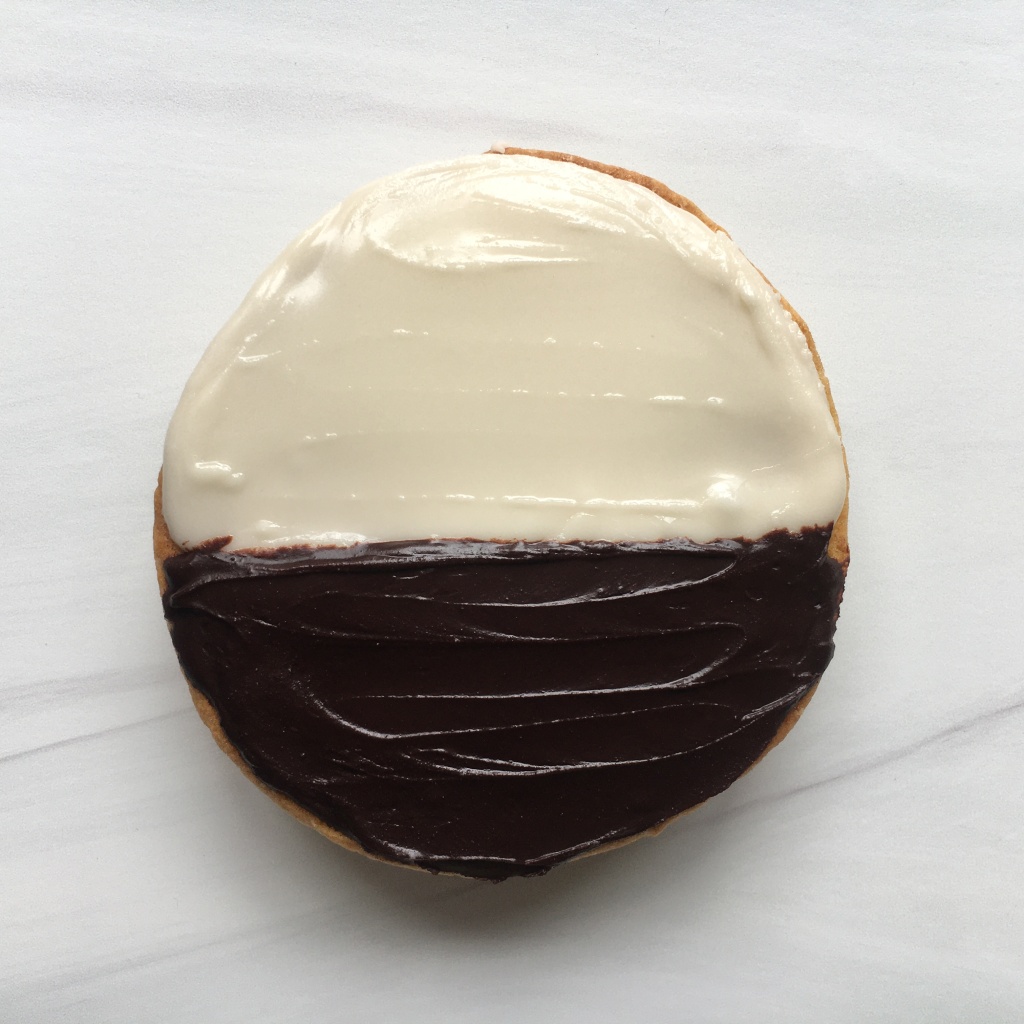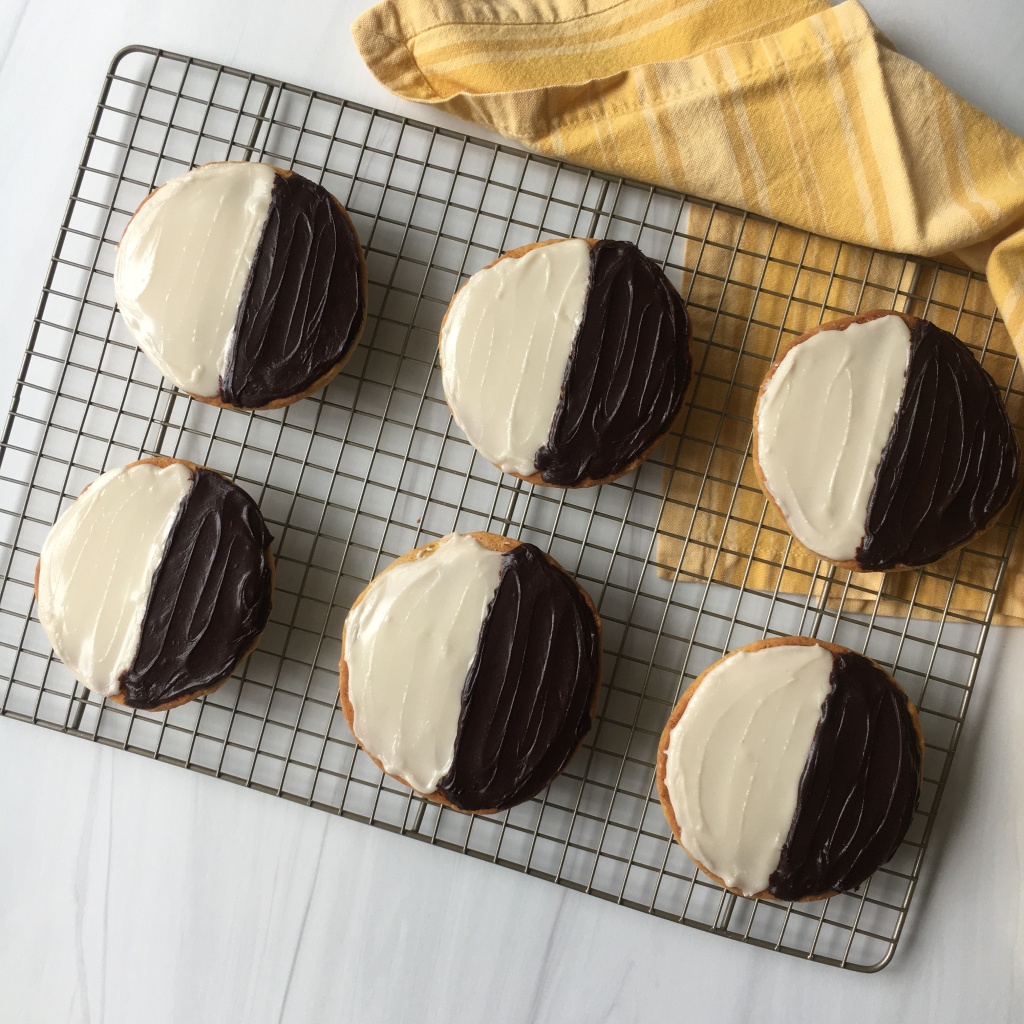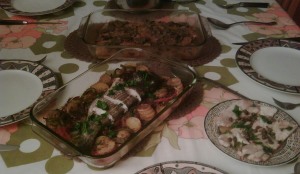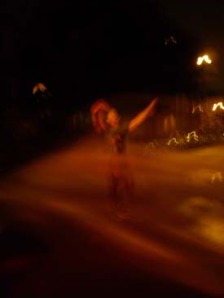There’s always been debate about the best way to eat an Oreo, but what I really want to know is how you eat a classic black & white cookie? First one color than the other? An initial bite where the two meet? Shared with friends or family? And if so, in triangles, like a pizza pie? Halves? Quarters? Ooh, I feel a really tasty math lesson coming on.

When schools closed in March 2020, my girls (then 6) and I finally learned how to make challah. The yeast was ancient (aspirationally purchased who knows when) but somehow still functional, and when we’d used the three little sachets, I ordered a glutton’s pack of instant yeast off Amazon because it was the only one in stock. I baked challah almost weekly, some Fridays with my daughters’ help and others without, until school semi-reopened in October, and it seemed mission impossible to fit in on a more synchronous schedule. Instead, I started picking up a loaf curbside at Orwashers on 78th. Of course, I couldn’t resist throwing in a couple black & white cookies to round out the order.
I can’t remember the first time I had a black & white cookie, but I am almost certain it was not underwhelming. Larger than life, more cake than cookie, glistening with smooth fondant frosting and aesthetically pleasing with that clean line down the middle where dark meets light, they are just. so. satisfying.
I do, however, remember how they became special to me.
It was the summer of 2000. I had just turned 18, and I was commuting into the city to work at Disney Publishing Worldwide on 5th Avenue, just off Union Square. I had gotten the job – a mix of administrative tasks in syndication – through a mom on my suburban block whose kids I babysat when their au pair was off. I wasn’t familiar with Manhattan, so the first day I joined her on the train from Scarsdale to Grand Central, and then on the downtown 6, the giant metronome clock an orienting landmark upon emergence, past Rainbow Falafel on 17th, across the avenue, and a right on 5th (though it may have been a left, I can’t recall). I faithfully followed this exact route every day, and retraced it in reverse at 5pm.
Manhattan was far from being mine, and Matthew, the bro-ish college intern who sat at the desk opposite me was appalled at my internet research skills (little did any of us suspect a gig at Google was in my future), but I got through my cataloging and filing and retrieving and copying and recording and annotating with plenty of time to spare each day, which I used to pen letters to far-flung relatives, and possibly to compose a poor poem or two. Money, however, I did not have in abundance, so I brought a bagged lunch from home, which I ate in the park with a book and the pigeons for company. The day I forgot my brown bag, I delighted in a $3 Rainbow falafel. The day I forgot my subway fare, I looked under the station’s constellations for a stranger who looked like a mom and would be willing to give me a $1.50 to get to work. I only had to ask one. The return fare I borrowed from my boss.
My older brother, a couple years my senior, was also working in the city that summer (though apparently not on the day I had pulled into the terminal with an empty wallet). I would e-mail him (you’ve got mail!), or maybe even call his office landline from my office landline before I left my desk for the day, and we would contrive to meet on the same train for home. I usually arrived a little early and sometimes stopped at Zaro’s to pick up a big black & white cookie that my brother and I would split down the middle…chocolate for him, vanilla for me. (Now you know how I prioritize my pennies.) On Fridays, I also got a challah because my mom liked the ones from Zaro’s.
Indubitably, time does march ever forward, but there are circles too. Life has a way of sending us back, rifling through dusty mental files for the contours and details of a story long forgotten. As I did last fall, when I fell back into a Friday challah and black & white cookie routine reminiscent of that summer in the city two decades ago.
I now live on the Upper East Side. A handful of blocks north, very close to where my kids went to pre-school, stood Glaser’s Bake Shop (1902-2018), famed for the American debut of the black & white cookie (though some attribute this honor to William Greenberg, another UES bakery). The Bavarian couple who opened what became an UES institution (now sorely missed) allegedly brought the recipe along with them from the old country…which does little to explain why today these cookies are called Amerikaners in Germany! Another quirky circle to smile over. Somewhere along the way, black & whites also became a Jewish food, which might explain why I think they pair so well with a challah purchase!
I recently saw a post on the UES’s Buy Nothing Facebook group. Someone wanted recommendations for the best black & white cookie in the neighborhood. There were a lot of very heartfelt “RIP Glaser’s” in the comments…it seems their soft, whipped frosting was the anomaly (but also the experience of the original no-frills interiors and long-running family operation). The other favorites – Orwashers and William Greenberg among them – were noted for their harder glaze-like shell. Someone asked if any of these iterations resembled Amerikaners, whose frosting is a little lemony. Lemony! Also last fall, I spent some time looking up recipes for black & white cookies online, and many listed lemon in the ingredients, which I found confusing at the time. Citrus closes another little circle.

Speaking of little circles, I will say that mini black & white cookies are not nearly so satisfying as their big sisters. There’s less to love. Biting into one will leave you yearning for a thicker base and extra glaze. Even my girls – twins who cherish anything that can be their own rather than shared – informed me with seriousness (after I bought a box of minis with our challah one Friday) that it’s better to split a regular one four ways than have a mini all to yourself! (I will say we did greatly enjoy Orwashers’ blue & white minis over Hanukkah…I detected a hint of almond essence that’s typically absent from the traditional ones.)
One brave commenter on the Facebook group did question the hype. “I never personally understood the attraction. It’s a cakey cookie with vanilla icing on one side and chocolate icing on the other. But it sure is popular anyway.” I have to say I felt the same way about Oreos the first time I tried them. I was about eight and living in Istanbul. I had never been to the United States, but friends at the international school had a stash and shared a precious few. They raved. I didn’t get it. But now I do. Years of Oreo TV ads from my adolescence (I moved to NY at 12), immersed in a culture that adores them (hello cookies & cream everything), and now watching my kids decide how best to eat them (they scrape out all the frosting and eat that last, sometimes dolloped on blueberries), I am a convert, secretly raiding the Double Stuf family pack after the kids go to bed (a pandemic low/high).
Food nourishes our bodies (ok, maybe not Oreos, but cocoa and sugar, too, have their role), but it also tells a story – usually about connection with other humans, and in so doing, it nourishes our souls. It also reconnects us to our own stories and personal histories. Fragrance – so much of taste is perceived through smell – is the ultimate elicitor of memory. We don’t yearn for Glaser’s cookies (or that pesto from the rosticceria down the dirt road in Tuscany, or our grandmothers’ lasagna) just for their flavor (sometimes in re-tasting we reluctantly recognize we may have built things up a bit… “maybe they changed the recipe?”), but for the emotions and experiences associated with them. Upon inspection, it may seem a little silly to connect over food…aren’t there bigger, more important things, more valuable interactions to be had? But it’s a gateway, and it’s universal, and trite though it may seem at times, I find it worthwhile. I find it human.
I began this post with the question of how best to eat a black & white cookie, and there are probably as many answers as there are people who adore them. I used to halve them with my brother, he got the chocolate, I kept the vanilla. If my twins are sharing, they like to split the other way, so there’s black and white in each of their portions. My one daughter peels off the frosting as best she can and saves that for last. Our family method, arrived at after some trial and error, is three vertical cuts for four vertical strips…for maximum precision, I start with the middle cut first, then cut each half in half again. It, too, may seem silly, but even little rituals (even little rituals involving food) can be grounding and pleasurable and sustaining and meaningful on a different plane over time. Of course, my girls know the story I’ve recounted above, they’ve heard it as many times as we’ve had black & white cookies, and so it will become part of our family lore, of brothers and sisters breaking bread (and cookies) together, endeavoring where possible to be on the same train, even when they are well on their way to being grown.

It’s entirely possible that black & white cookies may fundamentally not be that special. And yet they are. Visually striking and delicious in their simplicity, they have captured many hearts and become iconic and symbolic, not to mention stylish. Perhaps it is by virtue of their ordinariness that they have earned such wide appeal and fierce fandom. By virtue of being ordinary, they have become extraordinary.
If you have a black & white cookie story (or method of eating) to share, I would love to hear it in the comments below!






